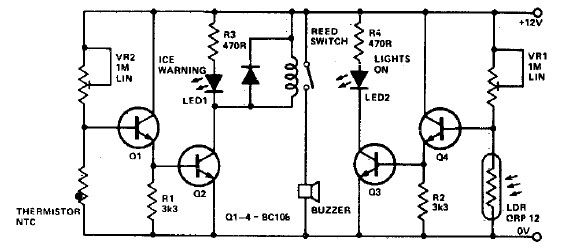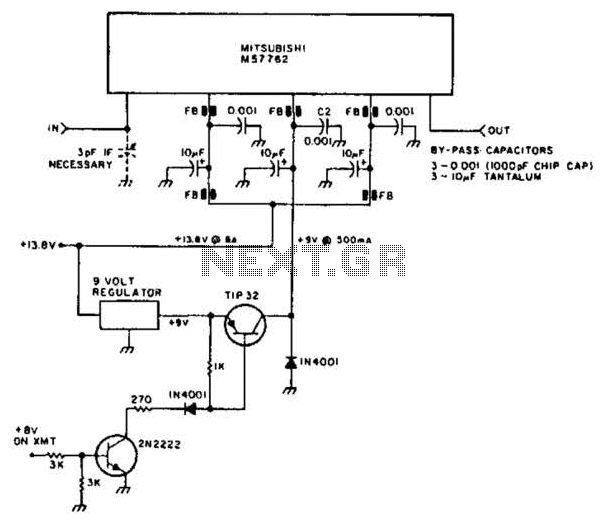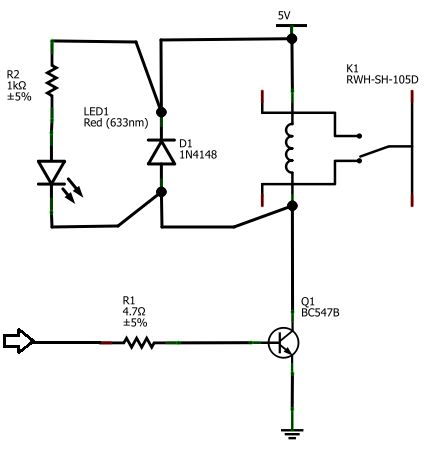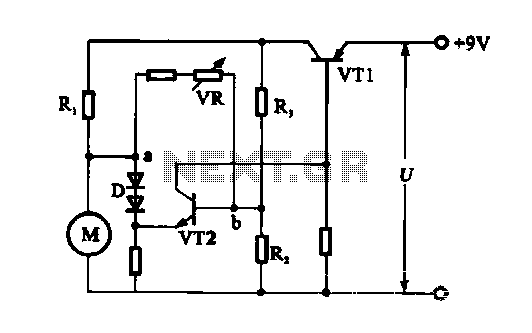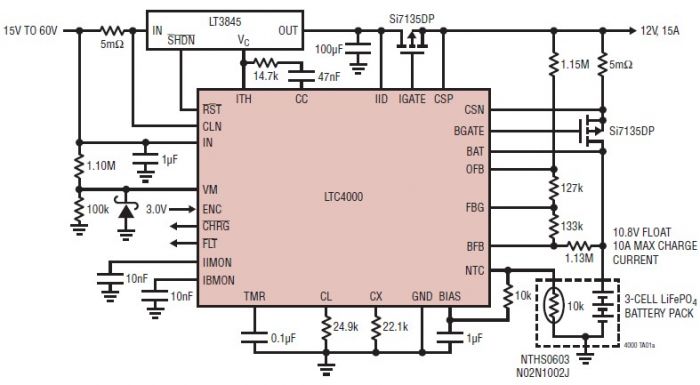
The Remote Controlling Circuit
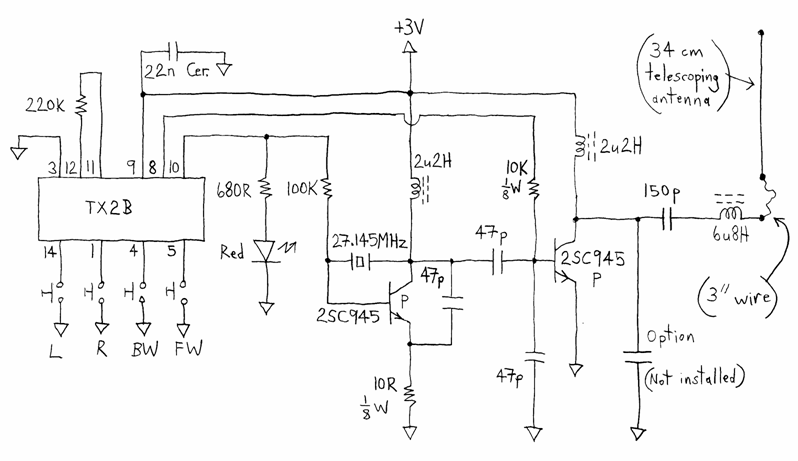
The design of this project relies heavily on sensors, which are present in both the control module and the robot. The computer analyzes the signals from these sensors to determine appropriate output actions. The control unit utilizes potentiometers as its sensors, sending signals to the computer for data interpretation. Additionally, the control module is equipped to receive signals from the computer, providing the controller with feedback about the robot's environment. This feedback system consists of three primary components: a virtual reality helmet featuring 32-bit color and approximately 500,000 pixels per eye, which enhances the operator's immersion; sound capabilities that contribute to a three-dimensional perception; and tactile feedback through special jammers that activate when the robot grasps an object. These jammers are motors that lock the joint to prevent further bending. Vibration feedback, similar to a cell phone's vibrate function, is provided through the fingertips of the suit when the robot makes contact with objects. Additionally, the suit regulates temperature to mirror the robot's environmental conditions. The robot is equipped with three types of sensors: visual sensors, including dual cameras for transmitting visual data; auditory sensors using specialized microphones, with audio signals processed and relayed to eight speakers in the operator's room for surround sound; and pressure sensors, which are a variant of potentiometers that decrease resistance with increased pressure, enabling the operator to gauge grip strength on objects. There are also probes for detecting temperature and environmental changes like humidity. A fail-safe system is incorporated, featuring redundant sensors to ensure continued operation even if the primary sensors fail, and a computer program safeguard that prevents the robot from exerting dangerous pressure on the operator in case of a malfunction. This circuit demonstrates the functionality of an Analog-Digital Converter (ADC), with output directed to both a computer and an 8-bit LED display, where each LED corresponds to a binary digit. The circuit connects to the computer via an 8-bit output, displaying hand movements on the screen. This design integrates analog and digital signals, with the ADC converting analog inputs into 8-bit digital signals, which are binary in nature (1 or 0). The signal from the potentiometer is sent to the ADC chip, which outputs through eight pins. This output is then analyzed by the computer, triggering specific actions, such as generating computer graphics of a hand. Despite the parallel port's limitation of five inputs, the system manages to handle eight bits of data.
The project utilizes a sophisticated integration of sensors and feedback mechanisms to enhance the operator's interaction with the robot. The virtual reality helmet serves as a primary interface, providing high-resolution visual feedback that allows for precise control and situational awareness. The audio system, with its surround sound capability, complements the visual feedback by immersing the operator in the environment, enhancing the realism of the experience.
The tactile feedback system is particularly noteworthy. The jammers provide a physical sensation of grip, simulating the experience of holding objects. This feedback is critical for tasks requiring delicate manipulation, as it allows the operator to adjust their actions based on real-time feedback. The vibration feature adds another layer of realism, alerting the operator to contact with objects, which is essential for effective remote operation.
The fail-safe system is a crucial aspect of the design, ensuring that the robot can continue to function even if some sensors fail. This redundancy is vital for safety, as it guarantees that the operator is not subjected to harmful forces. The computer's programming includes safeguards that prevent dangerous actions, enhancing the overall reliability of the system.
The ADC's role in converting analog signals from the potentiometers into digital signals is central to the operation of the circuit. The eight output pins of the ADC allow for a wide range of data representation, enabling detailed control over the robot's actions. The integration of analog and digital signals facilitates seamless communication between the operator and the robot, ensuring that commands are executed accurately.
In summary, this project exemplifies the convergence of advanced sensor technology, feedback systems, and digital signal processing, resulting in a highly interactive and responsive robotic control system. The careful design considerations, including fail-safes and immersive feedback mechanisms, contribute to its effectiveness and user safety.The design of this project depends on the sensors. The control module and the robot both contain sensors. The computer, in turn, analyzes the signals to make the appropriate output actions. As previously mentioned, the potentiometers are the sensors on the control unit. They send the signal to the computer that interprets the data. However, the co ntrol module also has features to receive signals from the computer, which gives the controller a feel of the reality that the robot is in. This feature is comprised of three different devices. The first is a virtual reality helmet, with 32-bit colour, and approximately 500, 000 pixels per eye.
This gives the operator a real sense of the reality, and allows him to operate the device effectively. A second less important feature is sound, this helps the operator gain more of a three dimensional feeling of the area.
The third feature is touch. Special jammers ” operate when the robot reports that it has grabbed onto something. The jammers ” are essentially motors that reverse, therefore jamming the joint from further bending. Also, another way to send force-feedback is through vibration. Very much like the vibrate signal on a cell phone, the tip of the fingers on the suit vibrates when the robot touches something. As well, the temperature inside the suit is regulated, to a smaller degree of course, to reflect the temperature that the robot is experiencing.
There are three corresponding sensors on the robot. The first is visual. It consists of two cameras on the robot, through which visual data is transmitted to the computer, analyzed, and then sent to the suit. The seco nd is the audio. This is achieved through special microphones on the robot. The audio signals are processed by the computer, and sent out to 8 speakers laid around the operator`s room for special surround sound effect.
The pressure sensors, or touch sensors, are essentially a different type of potentiometer. The resistance decreases when the applied pressure becomes greater. It gives the operator a feel of how tight the grip is on a specific object. There are also additional probes that detect the temperature and other environmental changes such as humidity. All of the above has to be built with a fail-safe system. The fail-safe system does two things. First, a second or even third set of sensors on the robot allows it to still function, even after the original set of sensors have been knocked out.
Secondly, a fail-safe in the computer program makes sure that if the robot is somehow crushed, for example, the computer does not apply the same crushing pressure on the operator, and thereby makes sure he doesn`t get killed. This circuit demonstrates the function of the ADC (Analog – Digital Converter). The resulting output on this circuit is a feed to a computer and an 8-bit LED display. The 8 LEDs each represent 1 binary digit. The total maximum number of different outputs with the 8-bit LED is previously described to be 256 different outputs.
The current circuit hooks up to the computer with 8 bit output, and the hand movement is displayed on the computer screen. This is where the functions of the remote and potentiometer circuits we built above are combined. The circuit is designed to incorporate analogue and digital signals. The ADC chip converts analogue signals into 8 bit digital signals. Signals are either on or off (1 or 0). The signal from the potentiometer is fed to the ADC chip. The ADC outputs signals in eight different pins. This signal is inputted into the computer for analysis so that the appropriate functions are completed.
The resistance level to the computer ranges from 0 – 255. Therefore, depending upon the signal that goes into the computer through the 8 bit number generated by the chip, certain actions (in this case, computer graphics of a hand) are done. The parallel port can only take 5 inputs, yet there are 8 bits of information. Therefore 🔗 External reference
The project utilizes a sophisticated integration of sensors and feedback mechanisms to enhance the operator's interaction with the robot. The virtual reality helmet serves as a primary interface, providing high-resolution visual feedback that allows for precise control and situational awareness. The audio system, with its surround sound capability, complements the visual feedback by immersing the operator in the environment, enhancing the realism of the experience.
The tactile feedback system is particularly noteworthy. The jammers provide a physical sensation of grip, simulating the experience of holding objects. This feedback is critical for tasks requiring delicate manipulation, as it allows the operator to adjust their actions based on real-time feedback. The vibration feature adds another layer of realism, alerting the operator to contact with objects, which is essential for effective remote operation.
The fail-safe system is a crucial aspect of the design, ensuring that the robot can continue to function even if some sensors fail. This redundancy is vital for safety, as it guarantees that the operator is not subjected to harmful forces. The computer's programming includes safeguards that prevent dangerous actions, enhancing the overall reliability of the system.
The ADC's role in converting analog signals from the potentiometers into digital signals is central to the operation of the circuit. The eight output pins of the ADC allow for a wide range of data representation, enabling detailed control over the robot's actions. The integration of analog and digital signals facilitates seamless communication between the operator and the robot, ensuring that commands are executed accurately.
In summary, this project exemplifies the convergence of advanced sensor technology, feedback systems, and digital signal processing, resulting in a highly interactive and responsive robotic control system. The careful design considerations, including fail-safes and immersive feedback mechanisms, contribute to its effectiveness and user safety.The design of this project depends on the sensors. The control module and the robot both contain sensors. The computer, in turn, analyzes the signals to make the appropriate output actions. As previously mentioned, the potentiometers are the sensors on the control unit. They send the signal to the computer that interprets the data. However, the co ntrol module also has features to receive signals from the computer, which gives the controller a feel of the reality that the robot is in. This feature is comprised of three different devices. The first is a virtual reality helmet, with 32-bit colour, and approximately 500, 000 pixels per eye.
This gives the operator a real sense of the reality, and allows him to operate the device effectively. A second less important feature is sound, this helps the operator gain more of a three dimensional feeling of the area.
The third feature is touch. Special jammers ” operate when the robot reports that it has grabbed onto something. The jammers ” are essentially motors that reverse, therefore jamming the joint from further bending. Also, another way to send force-feedback is through vibration. Very much like the vibrate signal on a cell phone, the tip of the fingers on the suit vibrates when the robot touches something. As well, the temperature inside the suit is regulated, to a smaller degree of course, to reflect the temperature that the robot is experiencing.
There are three corresponding sensors on the robot. The first is visual. It consists of two cameras on the robot, through which visual data is transmitted to the computer, analyzed, and then sent to the suit. The seco nd is the audio. This is achieved through special microphones on the robot. The audio signals are processed by the computer, and sent out to 8 speakers laid around the operator`s room for special surround sound effect.
The pressure sensors, or touch sensors, are essentially a different type of potentiometer. The resistance decreases when the applied pressure becomes greater. It gives the operator a feel of how tight the grip is on a specific object. There are also additional probes that detect the temperature and other environmental changes such as humidity. All of the above has to be built with a fail-safe system. The fail-safe system does two things. First, a second or even third set of sensors on the robot allows it to still function, even after the original set of sensors have been knocked out.
Secondly, a fail-safe in the computer program makes sure that if the robot is somehow crushed, for example, the computer does not apply the same crushing pressure on the operator, and thereby makes sure he doesn`t get killed. This circuit demonstrates the function of the ADC (Analog – Digital Converter). The resulting output on this circuit is a feed to a computer and an 8-bit LED display. The 8 LEDs each represent 1 binary digit. The total maximum number of different outputs with the 8-bit LED is previously described to be 256 different outputs.
The current circuit hooks up to the computer with 8 bit output, and the hand movement is displayed on the computer screen. This is where the functions of the remote and potentiometer circuits we built above are combined. The circuit is designed to incorporate analogue and digital signals. The ADC chip converts analogue signals into 8 bit digital signals. Signals are either on or off (1 or 0). The signal from the potentiometer is fed to the ADC chip. The ADC outputs signals in eight different pins. This signal is inputted into the computer for analysis so that the appropriate functions are completed.
The resistance level to the computer ranges from 0 – 255. Therefore, depending upon the signal that goes into the computer through the 8 bit number generated by the chip, certain actions (in this case, computer graphics of a hand) are done. The parallel port can only take 5 inputs, yet there are 8 bits of information. Therefore 🔗 External reference
Warning: include(partials/cookie-banner.php): Failed to open stream: Permission denied in /var/www/html/nextgr/view-circuit.php on line 713
Warning: include(): Failed opening 'partials/cookie-banner.php' for inclusion (include_path='.:/usr/share/php') in /var/www/html/nextgr/view-circuit.php on line 713
